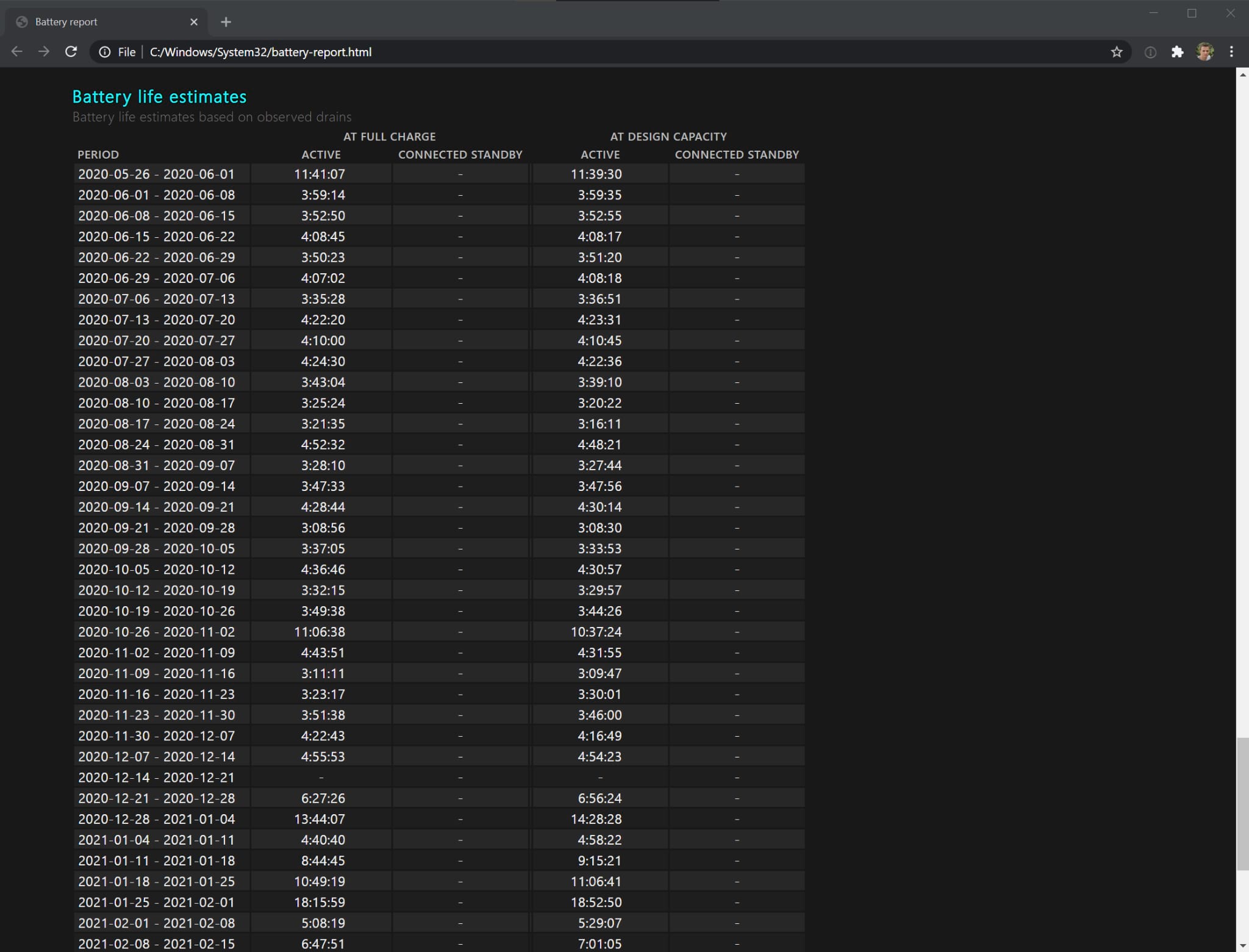Battery Health
Although I love my Razer Blade 15 Advanced, I fear battery degradation (longevity) will be an issue.
For example, thanks to the vrtical integration between hardware and software, Apple are known for achieving exellent battery life across their portable devices. However, what is less commonly known is that they also do a nice job of protecting the battery health, extending the usable life of the battery itself.
After one-year, I have already noticed a significant drop in battery life with my Razer Blade, Which is likely due to poor battery management during charging cycles, etc. This issue is not limited to Razer laptops and likely an issue with all Windows-based portable devices, recognising that the software can play an important role in battery health.
Windows (by default) does not provide much insight into battery health (only the current charge), but thankfully it is possible to get Windows 8/10 to generate a comprehensive battery report.
Simply open a command prompt (CMD) and run the following command.
powercfg /batteryreport
This command will create a HTML-based battery report, found in the following location.
C:\Windows\System32\battery-report.html
Although the battery report does not specificlly highlight “health”, it does provide a lot of information to provide an educated understanding. The key sections include:
- System Information
- Battery Information
- Recent Usage
- Battery Usage
- Usage History
- Battery Capacity History
- Battery Life Estimates
The report can be quite large, but is formatted well, with clear sections.

Each section also includes a summary (conclusion), which can be used as a quick “health check”.

Looking at the battery report from my Razer Blade, I do not see the battery lasting much beyond two-years (with usable battery life). Thankfully, unlike a modern Mac, the battery is easy to replace, assuming a trusted alternative can be located, as Razer do not sell batteries seperately.